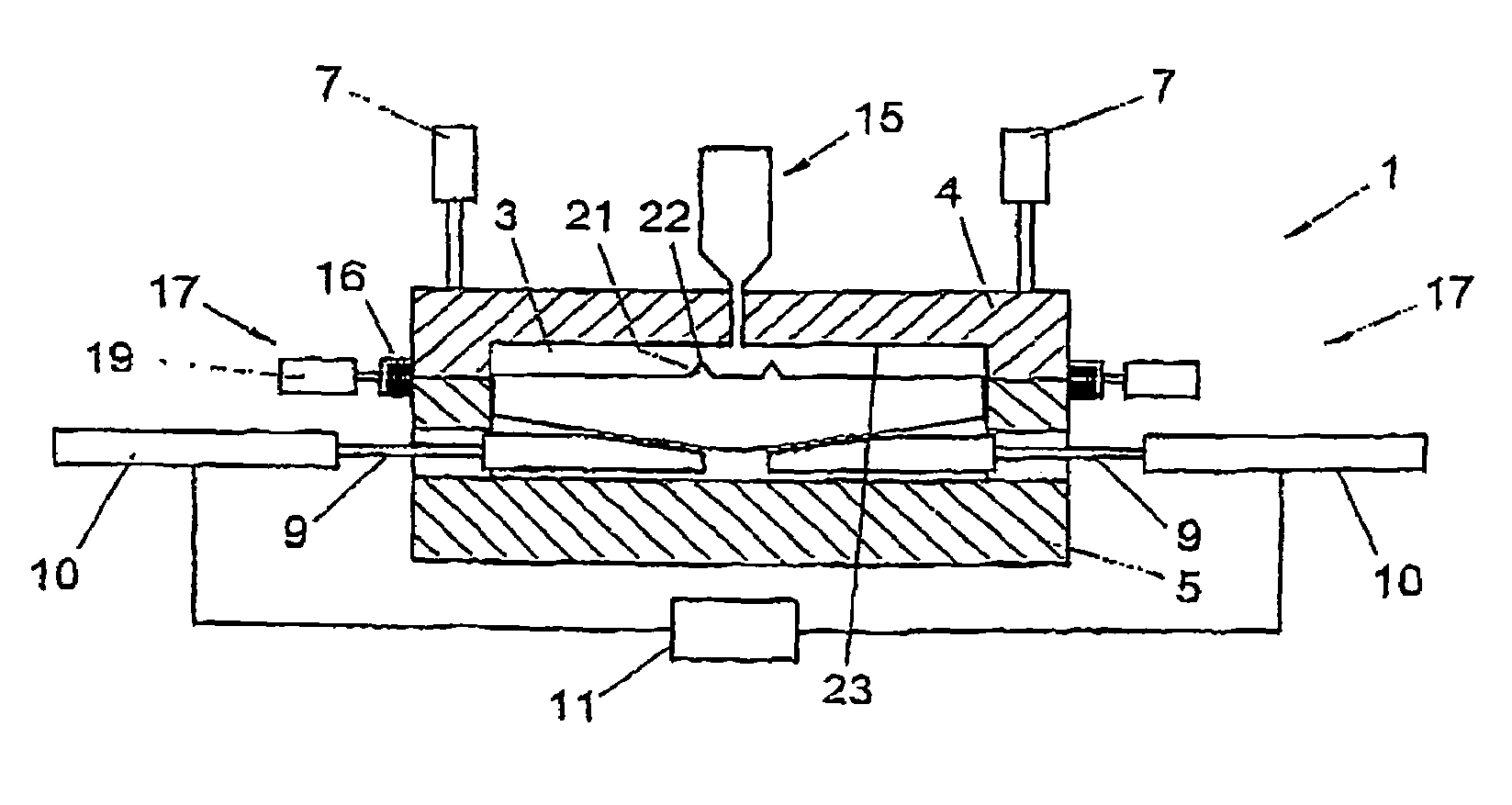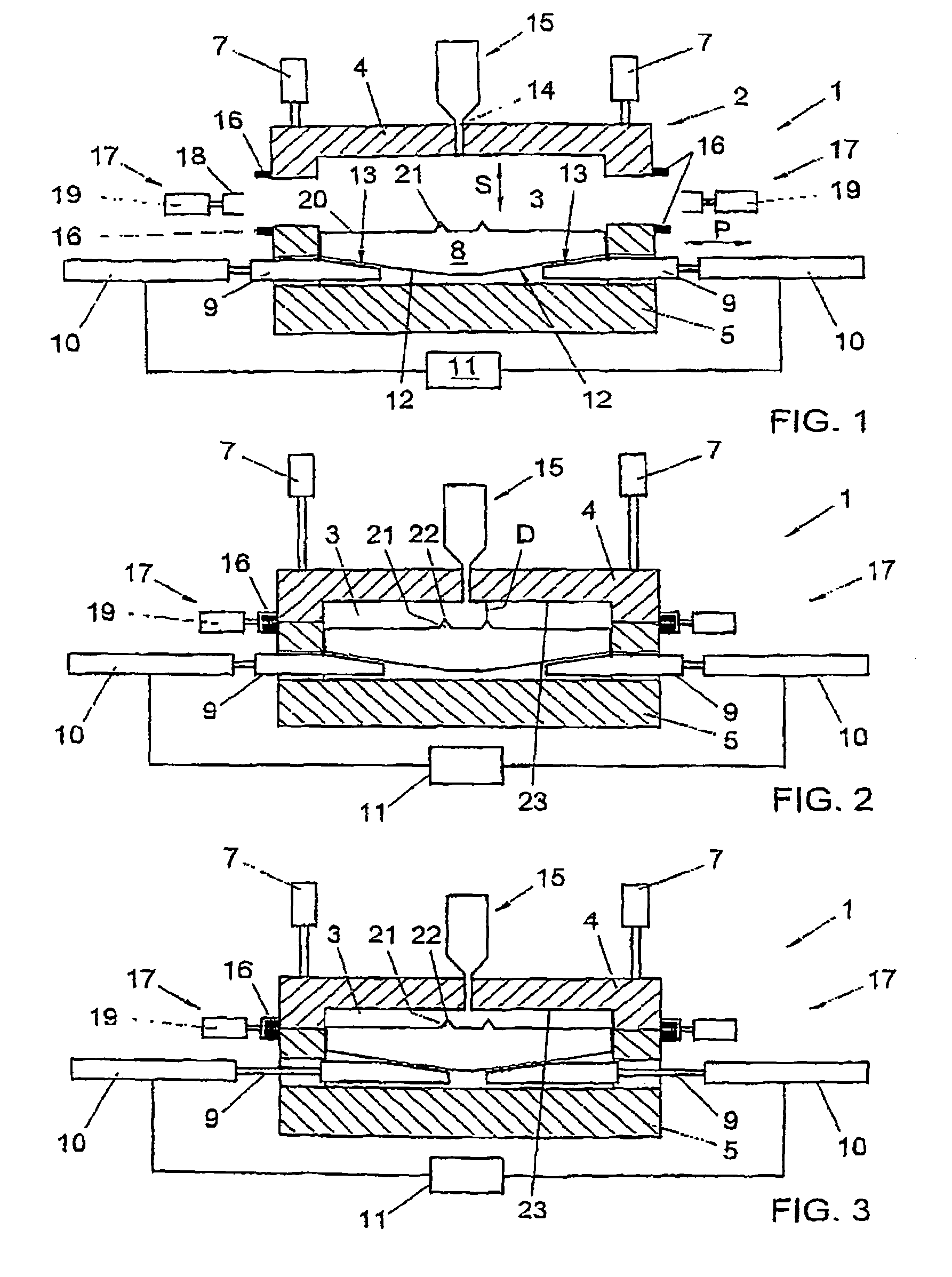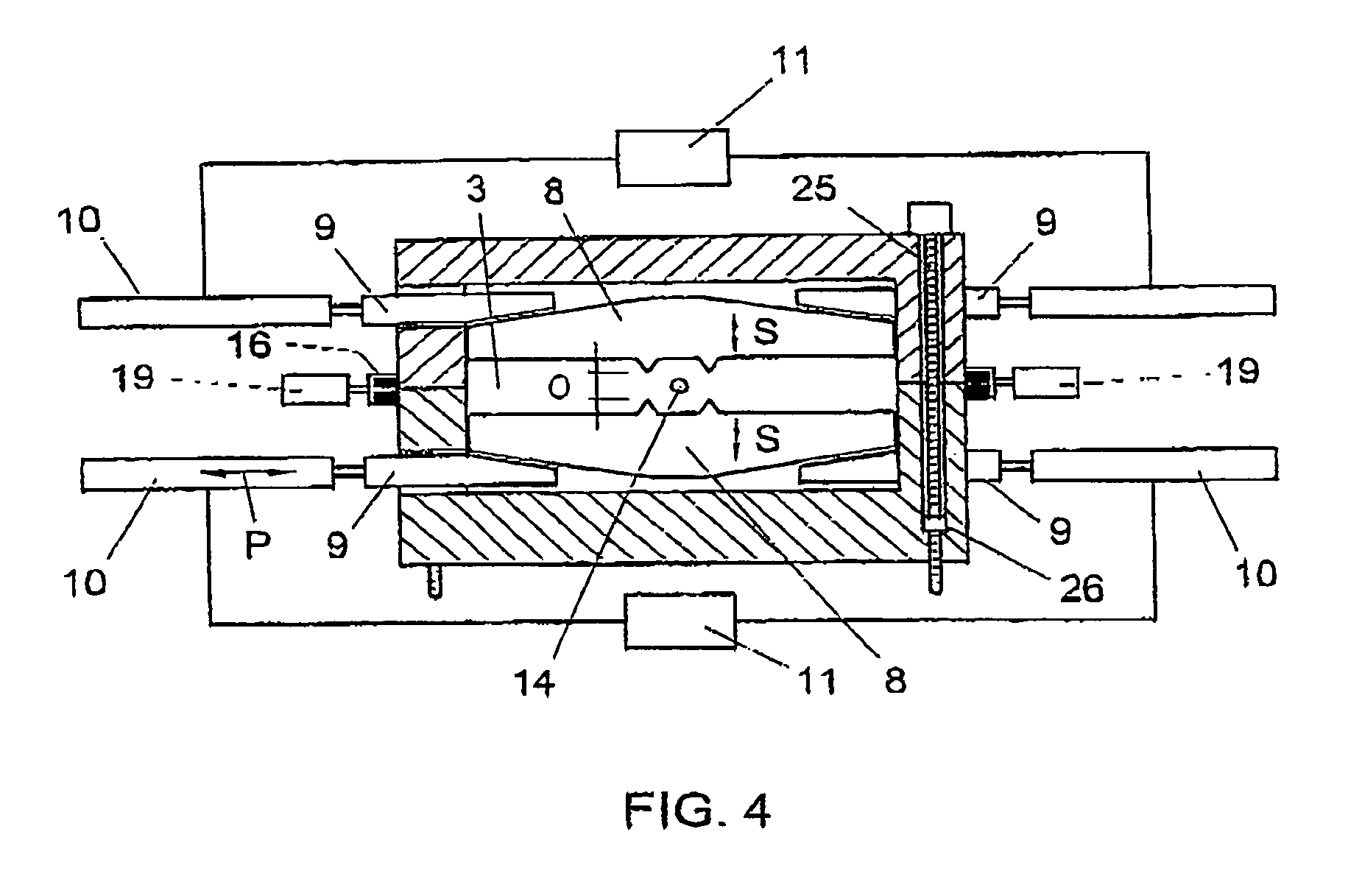Apparatus and method for manufacturing products from a thermoplastic mass
a technology of thermoplastic mass and apparatus, applied in the field of apparatus for manufacturing products, can solve the problems of limited product minimum and maximum sizes, limited product length, and larger problem, and achieve the effects of preventing plastic properties, thin product parts, and avoiding the movement of or each slid
- Summary
- Abstract
- Description
- Claims
- Application Information
AI Technical Summary
Benefits of technology
Problems solved by technology
Method used
Image
Examples
Embodiment Construction
[0036]FIG. 1 shows, in cross-sectional side view, an apparatus 1 according to the invention, provided with a mold 2 with a mold cavity 3 therein. The mold comprises a first, moveable part 4 and a second, complementary part 5, fixedly arranged. The moveable part 4 is guided by suitable guides, which are not shown but can, for instance, be sliding pins, rails, guide rods or a press or the like and which are directly clear to the skilled person. The moveable part is moveable with the aid of devices suitable to that end, represented in FIGS. 1-3 as piston-cylinder assemblies 7. It is clear that this may be any suitable device, for instance also a simple press, screw means such as spindles as shown in FIG. 4, link systems or the like. These can be of relatively light design as they are only meant for moving the part 5, virtually not for absorbing tensile or pressure forces in the further cycle.
[0037]In the fixed part 5, a slide 8 is provided, moveable in the direction S between a retract...
PUM
| Property | Measurement | Unit |
|---|---|---|
| filling pressure | aaaaa | aaaaa |
| pressures | aaaaa | aaaaa |
| pressures | aaaaa | aaaaa |
Abstract
Description
Claims
Application Information
 Login to View More
Login to View More - R&D
- Intellectual Property
- Life Sciences
- Materials
- Tech Scout
- Unparalleled Data Quality
- Higher Quality Content
- 60% Fewer Hallucinations
Browse by: Latest US Patents, China's latest patents, Technical Efficacy Thesaurus, Application Domain, Technology Topic, Popular Technical Reports.
© 2025 PatSnap. All rights reserved.Legal|Privacy policy|Modern Slavery Act Transparency Statement|Sitemap|About US| Contact US: help@patsnap.com



